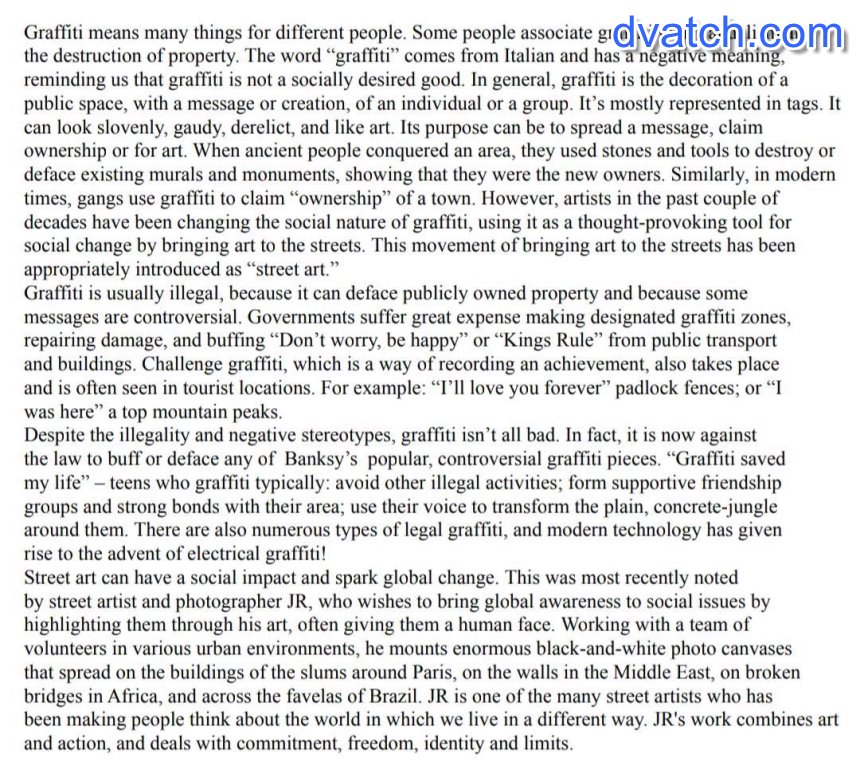 Androris
AndrorisAnswer the questions according to the text. 1) Does the society and government have a positive attitude to graffiti?2) How has the main intention of graffiti changed since ancient times?3) What are the most commom places for graffiti?4) Is graffiti encouraged by the law?5) What are the examples of positive graffiti influence?6) Who are the two famous graffiti artists?7) What is a special style JR has?8) How are graffiti and street art different?9) Do you personally consider graffiti to be art?

: 1. No, it doesn't
2. Ancient people destroyed or defaced existing murals or monuments showing that they were the ner owners of the conquered area and in modern times graffity is used to claim 'ownership' of a town.
3. The most common places for graffiti are buildings, public transport, tourist locations, fences and a top mountains peaks.
4. No,it isn't.
5. Graffiti saves teens' lives - they avoid other illegal activities, form supportive friendship groups and strong bonds with their area; use their voice to transform the plain concrete-jungle around them.
6. It is only mentioned about one famous graffiti artist JR in the text.
7. He mounts enormous black-and-white photo canvaces that spread on the buildings of the slums around Paris, on the walls in the Middle East, on the bridges in Africa and across the favelas of Brazil.
8. For many people graffiti is associated with vandalism and the destruction of property. Its purpose can be to spread a message, claim ownership or for art. Street art can have a social impact and spark global change.
9. Yes, I do.
 Iliyan
Iliyan